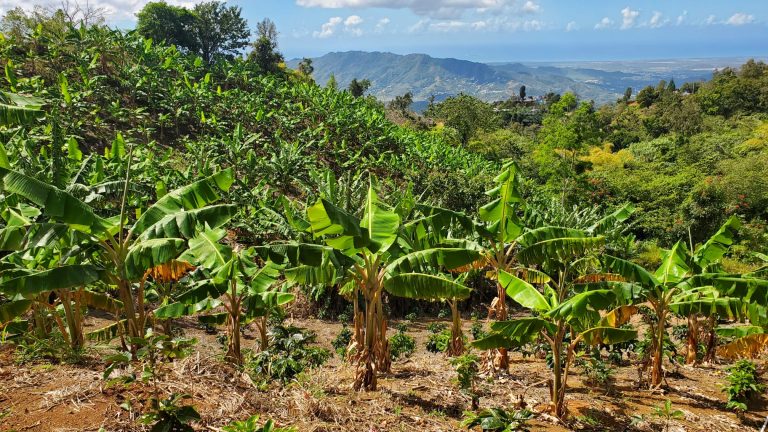The famous Puerto Rican song “Temporal” or “Storm” has the line: “The green stings the eyes, the harvest is lost.” This song expresses the feelings many of us feel when we see images of farmers' crops on the ground , the result of wind and rain brought by Tropical Storm Ernesto as it passed through eastern Puerto Rico on August 14.
“Witnessing years of field work touches all your senses. And there's a lot of money invested. I lost my appetite. It's like mourning,” said the farmer from Villalba, a mountain town in the south of the main island of Puerto Rico. Marisita López Cortés says. These words echo the sentiments of people in the area, who see the crops on the ground and the green stings their eyes. A large proportion of these green crops are plantain and banana crops.


Landslide after heavy rain
Average ocean temperatures along the route from Ernesto to Puerto Rico are 0.8°C above normal, and increases are 80 to 100 times more likely than normal due to climate change, according to the nonprofit Climate Center . We know that higher temperatures produce stronger storms.
Puerto Rico's Department of Agriculture reports that crop damage is currently estimated at $23 million. Plantains, bananas and coffee are the main crops affected.
Reports, photos and stories from cities from Santa Isabel in the south to Monabo in the east to the mountains of Barranquitas and Corozal show farms being inundated by the fifth storm of the 2024 hurricane season .
“We lost half of our plantains. Eight inches [of rain] fell down. We cannot enter the farm; landslides dominate,” López-Cortez said in Spanish.
The mountains of Puerto Rico recorded about 10 inches (25.4 centimeters) of rain and wind gusts of up to 86 mph (138 kph), according to the National Weather Service.
López Cortés' farm is dotted with a variety of crops, including plantains and coffee. This helps many of her crops withstand strong winds. But heavy rains triggered landslides that destroyed crops.
K. Stephen Hughes, head of the Puerto Rico Landslide Mitigation Office affiliated with the University of Puerto Rico in Mayaguez, estimates that about a hundred landslides have occurred.


A large portion of Puerto Rico is prone to landslides, and most agricultural production occurs in these areas.
“Almost all [landslides] I've seen shallow soil damage,” Hughes said. “Shallow doesn't mean they're less important. They still block roads and isolate different communities.
Notably, vulnerability to landslides is a stressor for people in the region, especially for farmers who see their land affected by landslides.
Government and grassroots assistance to farmers
The recovery effort will be arduous. Farmer Stephanie Rodríguez discussed the issue with a farmer named Junior from Ciales, a mountainous area in the center of the main island. In a video she uploaded to Facebook, both said there had been an increase in extreme events such as droughts and heavy rains.
This weather change complicates farm planning. Part of many plans includes crop insurance through the Puerto Rico Department of Agriculture Agricultural Insurance Company.
But for several crops, these policies only provide coverage if the event is classified as a hurricane — not tropical storms.


“We are asking farmers to submit damage reports… as we are designing a scheme to provide them with compensation [for their losses]”, Secretary of State González Beiró said in an interview with Telemundo on August 15.
In addition to other state and federal options, farmers can choose the Uninsured Crop Disaster Assistance Program administered by the federal Department of Agriculture’s Farm Service Agency.
Lopez-Cortez said she has contacted service providers to process applications for the programs. But many do not have the technical or management resources to participate in these programs.
After Hurricane Maria, bureaucracy and the slow recovery of local infrastructure hindered the timely recovery of farms. But various grassroots groups and organizations, including government agencies themselves, have put in place measures to help people apply for these programs.
What to do next?
What would agriculture and fisheries safeguarding programs look like if they adapted to the climate realities we are experiencing? How helpful would it be to provide accessible services and programs for risk planning and mitigation for these sectors that are so important to our food security?
Another line from the song that opens this column is: “What will become of Puerto Rico when the storm comes?”
Interviewed farmer Rodriguez Junior may have an answer to this question: “We will continue to plant.”
Marisita López Cortés supports this statement and hopes it will come true on her farm.
This article is written in Spanish and translated by the YCC team.
We help millions of people understand climate change and what to do about it. Help us reach more people like you.

